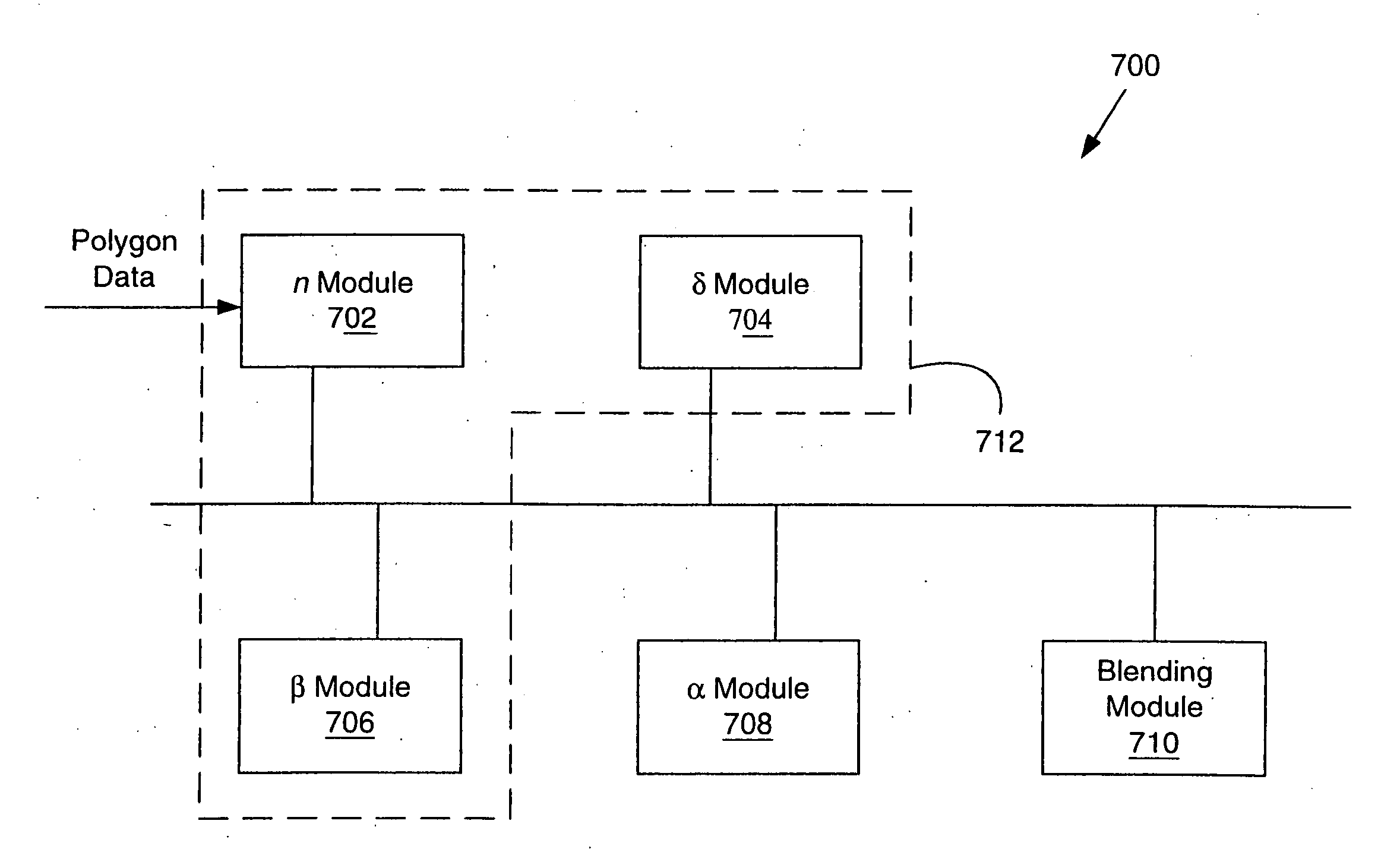Matched texture filter design for rendering multi-rate data samples
a texture filter and data sample technology, applied in the field of graphics systems, can solve the problems of undesirable artifacts, variable sampling rate or other non-standard graphics processes, and the filtering algorithm of the various texture filter algorithms does not address the problem of variable sampling rate or other non-standard graphics processes, and conventional systems do not provide a texture filter that varies the filter
- Summary
- Abstract
- Description
- Claims
- Application Information
AI Technical Summary
Benefits of technology
Problems solved by technology
Method used
Image
Examples
Embodiment Construction
FIG. 1 is a block diagram of an exemplary system 100 for performing the texture filtering operations of the present invention. The system 100 is typically implemented in a graphics processing system within a computer or similar processing device. The system 100 includes a primitive processor 102, a multi-rate data sampler 104, a matched texture filter 106, RAM 108 for storing textures, a pixel processor 110 and a rendering buffer 112.
The primitive processor 102, which may be a triangle processor, typically receives the three-dimensional geometry elements (e.g., triangles or other graphic primitives) and processes the data describing the size, shape, position, and other relative characteristics of the graphics primitives. In some cases, the primitive processor 102 is also capable of generating edge functions of the primitives. These primitives may be defined in three-dimensions using Euclidian coordinates or in four-dimensions using homogenous coordinates, and subsequently, projecte...
PUM
 Login to View More
Login to View More Abstract
Description
Claims
Application Information
 Login to View More
Login to View More - R&D
- Intellectual Property
- Life Sciences
- Materials
- Tech Scout
- Unparalleled Data Quality
- Higher Quality Content
- 60% Fewer Hallucinations
Browse by: Latest US Patents, China's latest patents, Technical Efficacy Thesaurus, Application Domain, Technology Topic, Popular Technical Reports.
© 2025 PatSnap. All rights reserved.Legal|Privacy policy|Modern Slavery Act Transparency Statement|Sitemap|About US| Contact US: help@patsnap.com



